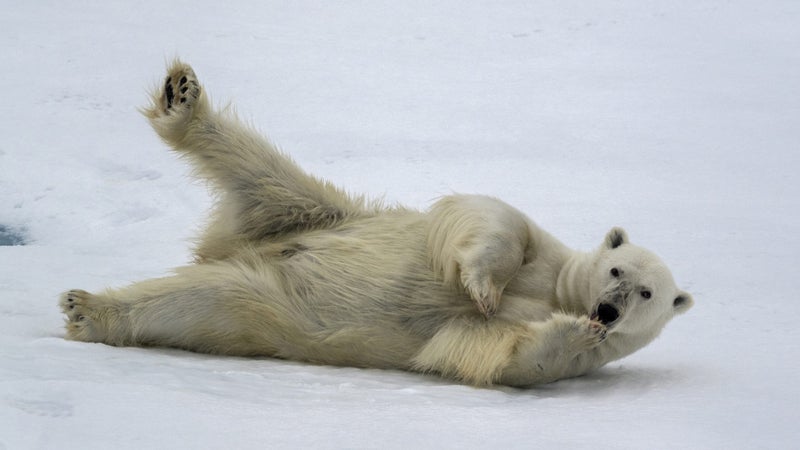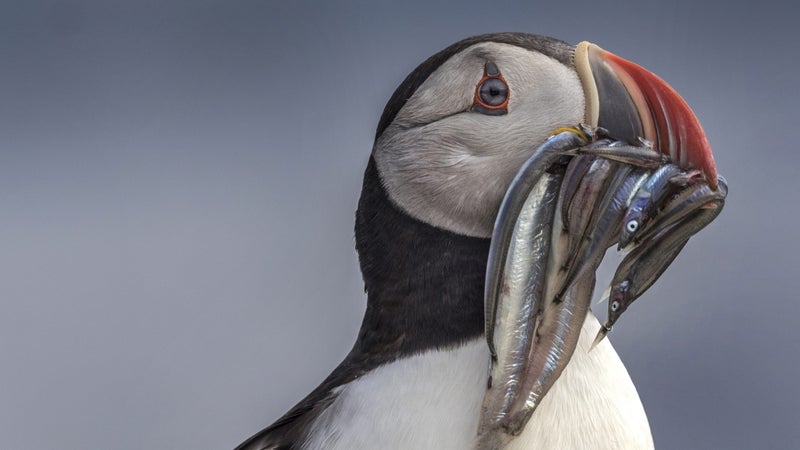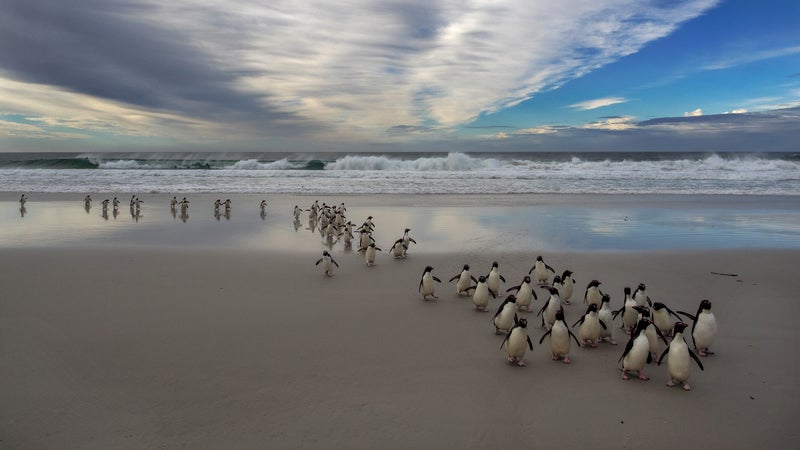The �����ԹϺ���r’s Guide to Wildlife Photography
10 tips from a Pulitzer Prize–winning photojournalist on how to nail the perfect shot
During his 46-year career as a photographer, National Geographic shooter and Olympus Visionary has photographed nearly every type of animal known to man. From polar bears in the Arctic to exotic birds in Tanzania to wild horses in the American West, he’s built one of the most robust and beautiful wildlife portfolios ever assembled. Which is why we turned to him when we wanted to glean some useful tips for how to make our own captivating photos of animals in their natural habitats. Here’s what he said.
Do Your Research
The best photos start with information. “The internet is an incredible resource. When I shoot for National Geographic, 70 to 80 percent of my contract time is spent doing research so that when I go into the field I’m as prepared as possible. If you’re going to , in New Mexico, to shoot sandhill cranes, you need to figure out how they land. Across the wind or with the wind? How do they fly? And make sure you go at the right time of year. Knowing your business is huge.”

Give It Time
“You’re looking for a one-five-hundredth-of-a-second moment out of a 24-hour day. It takes time to wait for that. But when you get [the photo], there’s nothing else like it on earth. When you miss it, it’s like ‘Okay, I’m going to quit and go flip burgers.’ Patience is huge; give it time. And that might mean you sit out there all day.”
But Be Ready for the Moment
When the action finally takes place, you better be ready. Even if the weather turns south. “Olympus gear, like the and M.Zuiko PRO lenses, are great because they're weatherproof. I’ve worked in Antarctica in heavy duty weather and I usually don’t cover up my cameras––they’re often hanging out in drenching snow and rain.” Another feature that helps Jay capture the perfect moment is the Pro Capture feature on his Olympus OM-D E-M1 Mark II. With the shutter half pressed, Pro Capture kicks in and tells the camera to continuously buffer a running series of shots at speeds up to 60 frames per second. Then, when Jay sees the precise moment he wants to capture, he fully presses the shutter and captures that exact moment, plus the 14 previous frames all at once, for a total of 15 images with a single shutter press. In this way, when Jay is poised to perfectly capture that bird taking flight, he’s guaranteed to capture the peak action.“That epiphany you have when you realize you have what you need, it’s a spiritual moment.”

Don’t Let Your Gear Get in the Way
Jay says that photographers often equate big, bulky DSLR cameras with good photos. If you have the biggest camera and lenses, you should be able to get the shot, right? Jay says that’s not always the case. “What I see all the time… is photographers waiting for a polar bear for two hours while attempting to hold a [DSLR] and 500-millimeter F2.8. And I often see them miss the image because the equipment gets in the way. It’s hard to move a bulky setup if the polar bear suddenly moves. I was just in the Arctic and was able to easily hand hold my mirrorless and the (a 420mm zoom lens equivalent). This compact gear allowed me to get the perfect shot.
Invest in Fast Lenses
And by fast, Jay means lenses that have big apertures and thus allow in a lot of light, such as the lenses in the lineup. “Wildlife photography demands fast glass. You’re often shooting during golden hour––really early or late––and those are going to be low-light scenarios. You need the speed of the lens to shoot well in those conditions.”

Carry Two Cameras If You Can
With two cameras, you can have access to two different types of lenses at the same time, giving you the ability to rapidly switch between those setups as necessary (instead of trying to fumble with swapping lenses on one camera, a sure way to miss the moment). Jay says that wildlife photographers often bring a wide-angle zoom so they can capture expansive shots with the animals in their environment, plus a long zoom lens so they can capture close-up portraits and details. Jay’s preferred camera strap is the , which holds two cameras at once and allows the user to quickly and comfortably switch.
Invest in Fast Memory Cards
“I see this all the time on National Geographic trips. People spend tens of thousands of dollars on the trip and on equipment, and then decide to save $20 by buying a cheap and slow memory card. With a slow card, the cheetah will take off and the camera will choke and hit a buffer within a second and a half—they’ve missed the picture because the card is not writing fast enough. I use a fast UHS-II card with 300MB/s write speed. With that I’m able to get up to 60 frames at 15 fps before I hit the buffer.”

Use the Back-Button Focus
Photographers often use the feature where a half press of the shutter button focuses the camera. Jay likes to use the focus button on the back of the camera (most have one; you just have to set it up in custom settings) because it ensures a more accurate focusing process, especially when tracking quick-moving animals like birds. It also helps him take advantage of the giant 121-point phase-detection autofocus on his . A warning, however, before you switch: this two-button technique, where you focus with one button and engage the shutter with another, takes time to master. “Practice it! It’s like rubbing your head and patting your stomach at the same time.”
Shoot RAW
Pro cameras can shoot high-speed bursts of RAW images (uncompressed digital files). “RAW gives you two stops’ worth of more dynamic range. For me, I want all of the data info I can get so I can process the image as I see it. JPEGS are lovely, but it’s like buying the cake done from the store instead of making it as you want it.”

Stabilization Is Key
The long lenses you use to shoot wildlife can cause blurriness, because they amplify even the slightest shakiness in your hands. That’s why Jay shoots with the OM-D E-M1 Mark II, which has 5-Axis Image Stabilization built into the camera body to counteract all types of hand motion. He also uses the and stabilized lenses. When used together, the camera and lenses team up to provide an incredible 6.5 stops of compensation, effectively eliminating motion blur for tack sharp telephoto images. “I was shooting a wildebeest migration in Tanzania last year and I had the M.Zuiko 300mm F4 IS PRO lens with the MC-14 1.4x Teleconverter. I was shooting 840mm all handheld! You’re really able to smooth things out and keep the camera steady, no tripod or monopod needed.”
Whether you’re a professional photographer or an admirer of photography, we have a camera system that’s designed for you. Our stunning compact designs, sophisticated technologies, and powerful imaging help you get your shot in many ways, unlike any other camera manufacturer. Learn more at .

